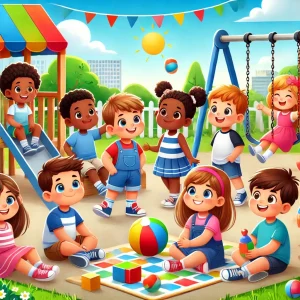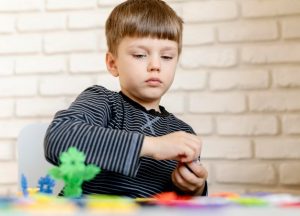Top Books and Strategies for Language Development in Kids
By Wellness Hub
Last Updated: December 10, 2024
Welcome to the magical world of reading! Engaging children with books is more than just a fun pastime—it’s a key to unlocking their language development. Each story introduces new vocabulary and sentence structures, enhancing their communication skills from a young age. Whether exploring silly tales or epic adventures, the right books can significantly enrich a child’s ability to express themselves. Let’s dive into how books for language development can open new worlds for your child, one page at a time.
Why Choose Books for Language Growth?
Ever wondered how reading can boost your child’s language skills? It’s simple: books introduce children to new words and sentence structures that everyday conversations often miss. This exposure is key to building a strong vocabulary and understanding language nuances.
Books aimed at language growth are crafted with age-appropriate challenges that engage and expand a child’s understanding. They don’t just add new words to a child’s vocabulary but also improve their grasp of grammar and sentence structure through well-constructed texts.
Integrating reading into daily routines turns passive reading into interactive learning. Encouraging questions and discussions about the stories makes reading more engaging and effective for language development.
Read more: 6 Amazing Children’s Books for Speech and Language Growth
Top Books for Language Development in Kids
Early Learners (Ages 1-3)
For the littlest readers, books that introduce basic vocabulary and simple concepts are essential. These books use repetitive text, bright illustrations, and interactive elements to engage toddlers and help them grasp the building blocks of language. Here are a few favorites:
- “First 100 Words” by Roger Priddy – This book is a wonderful introduction to essential words in a toddler’s world, using clear, colorful photographs that capture their attention and aid in word association.
- “Brown Bear, Brown Bear, What Do You See?” by Bill Martin Jr. and Eric Carle – A classic that uses a simple repetitive pattern to introduce colors and animals, making it a fun way to start learning about the world through language.
- “Chicka Chicka Boom Boom” by Bill Martin Jr. and John Archambault – This rhythmic alphabet adventure is perfect for introducing the ABCs in a memorable and playful way.
Read more: Empower Your Voice: 8 Books That Help with Stuttering
Growing Readers (Ages 4-6)
As children grow, their reading material should evolve to introduce more complex sentence structures and diverse storytelling techniques. These books not only entertain but also educate, making each reading session a rich learning experience:
- “Frog and Toad Are Friends” by Arnold Lobel – This collection of stories about two friends explores themes of loyalty, the passage of time, and the joys of everyday adventures, crafted in easy-to-understand language and a gentle narrative.
- “Where the Wild Things Are” by Maurice Sendak – This story takes young readers on a wild adventure with Max, where they learn about emotions and consequences through rich, imaginative narrative and illustrations.
- “The Very Hungry Caterpillar” by Eric Carle – Through a simple story of a caterpillar turning into a butterfly, this book introduces days of the week, counting, and the life cycle, all woven into beautiful illustrations.
Recommended Books by Age Group
| Age Group | Book Title | Author | Key Language Skills Developed |
|---|---|---|---|
| 0-2 Years | First 100 Words | Roger Priddy | Basic Vocabulary |
| 0-2 Years | Brown Bear, Brown Bear, What Do You See? | Bill Martin Jr. & Eric Carle | Colors, Animals, Rhyming |
| 3-5 Years | The Very Hungry Caterpillar | Eric Carle | Days of the Week, Counting, Life Cycles |
| 3-5 Years | Where the Wild Things Are | Maurice Sendak | Imagination, Emotions |
| 6-8 Years | Charlotte’s Web | E.B. White | Friendship, Life Lessons |
| 6-8 Years | Frog and Toad Are Friends | Arnold Lobel | Reading Fluency, Moral Lessons |
How Reading Enhances Language Skills
Reading isn’t just a fun pastime; it’s a powerful tool that boosts language skills. Here’s how:
Cognitive Benefits of Reading
- Brain Activation: Reading stimulates brain areas responsible for decoding symbols and understanding language, enhancing cognitive skills.
- Mental Flexibility: It challenges the brain with complex ideas and abstract thinking, improving mental agility.
Vocabulary Expansion
- New Words: Books expose readers to a broader vocabulary than daily conversations, introducing new ways to express thoughts and feelings.
- Contextual Learning: Words learned through reading are often presented in a context, helping with easier recall and usage.
Choosing the Right Books for Your Child
Selecting the perfect books for your child can make a big difference in their language development journey. Here are some tips on choosing books that are just right for their age and language skills:
1. Consider Your Child’s Interests
Start by picking topics that fascinate your child. Whether it’s dinosaurs, fairy tales, or space, books that capture their interests will keep them engaged and more willing to explore new words.
2. Look for Age-Appropriate Language
Choose books that match your child’s current language ability. For toddlers, books with simple sentences and repetitive phrases work best, as they help in reinforcing their growing vocabulary.
3. Interactive Elements
Books with flaps to lift, textures to feel, or sounds to hear can make reading more interactive and enjoyable, especially for younger children. These elements help keep their attention and enhance their learning experience.
4. Quality of Illustrations
Bright, clear, and colorful illustrations not only attract a child’s eye but also help them understand the story better. Pictures can provide context clues about the text, aiding in comprehension and retention.
5. Diverse Vocabulary
Aim for books that introduce a variety of words but are not too complex. The key is to gradually introduce new vocabulary that challenges them without causing frustration.
6. Readability
Ensure the text is clear and easy to read. For early readers, large print and clear spacing can help them in identifying letters and words more easily.
Which Books are Recommended for Language Development in Toddlers?
For toddlers, you might want to start with books like “Dear Zoo” by Rod Campbell, which uses simple language and a repetitive story structure that toddlers love. Another great pick is “Peek-A Who?” by Nina Laden, which combines guessing and surprise, making it fun and engaging for language learning.
Interactive Reading Strategies
Turning reading time into a dynamic and interactive learning experience can significantly boost your child’s language development. Here’s how you can make the most out of your shared story moments:
1. Use Gestures and Actions
While reading, animate your voice and use hand gestures to bring the story to life. For example, if you’re reading about animals, mimic their sounds and movements. This not only makes the reading session fun but also helps your child associate words with actions.
2. Point Out Words and Pictures
As you read, point to words and corresponding pictures. This helps your child make connections between the text and the visuals. Ask them to find objects or characters in the illustrations, which aids in vocabulary building and comprehension.
3. Discuss the Story
Pause your reading to ask questions about the story, such as “What do you think will happen next?” or “Why did the character do that?” This encourages your child to think critically and express their thoughts. After finishing the book, discuss the story’s events and ask your child to recount them in their own words.
4. Encourage Repetition
Encourage your child to repeat phrases or rhymes after you. Repetition is a powerful tool for language learning, enhancing both memory and pronunciation skills.
5. Create a Reading Routine
Establish a regular reading routine that your child can look forward to. This consistency helps build anticipation and excitement around reading, fostering a lasting interest in books.
Conclusion
Reading is key to developing your child’s language skills. It builds their vocabulary, enhances understanding, and encourages critical thinking. Make reading a fun daily habit to help your child thrive in communication. Visit Wellness Hub for more great resources and tips to support your child’s language journey. From engaging book lists to fun activities, we have everything you need to make learning enjoyable and effective.
Frequently Asked Questions:
1. What age should I start reading to my child?
You can start reading to your child from as early as infancy. This early exposure helps develop listening skills and familiarizes them with the sounds and rhythms of language, setting a foundation for future language learning.
2. How does reading help a toddler’s language development?
Reading to toddlers exposes them to a wider range of vocabulary than they typically hear in everyday conversation. It also introduces them to complex sentence structures and storytelling, which enhance their cognitive development and understanding of language.
3. Can reading books really improve my child’s vocabulary?
Absolutely. Regular reading sessions introduce children to new and diverse words, concepts, and contexts, helping them understand and use these words in their daily lives. This exposure is crucial for vocabulary expansion and language proficiency.
4. What are the best types of books for early language development?
For early language development, choose books that include rhyme, rhythm, and repetition. Interactive books with lift-the-flaps or textures, as well as picture books with simple and vivid illustrations, are also great for engaging young learners.
5. How often should I read to my child to help their language growth?
Reading daily to your child is ideal. Even short sessions of about 15-20 minutes can significantly impact their language development, comprehension skills, and love for reading.
6. What can I do to make reading more engaging for my child?
Enhance the reading experience by using different voices for characters, pointing to and discussing illustrations, and asking interactive questions about the story. Encourage your child to predict outcomes and express their thoughts about the plot and characters.
7. Are digital books as effective as physical books for language learning?
Digital books can be effective, especially with interactive elements that engage children. However, physical books are often better for young children as they provide sensory and motor experiences, like holding the book and turning pages, which are important for development.
8. How can I tell if a book is right for my child’s language skill level?
Select books that match your child’s current vocabulary and comprehension but still introduce new concepts and words. The book should challenge them without causing frustration, encouraging learning and curiosity.
9. What should I do if my child loses interest while reading?
If your child loses interest, it might be time to switch books or shorten the reading sessions. Choose books that align more closely with their interests, and try to make reading more interactive and dynamic.
10. Where can I find book recommendations for different stages of my child’s development?
MyWellnessHub offers a wide range of curated book lists designed specifically for different developmental stages. These lists are a great resource for finding books that are age-appropriate and targeted to your child’s growing language skills.
About the Author:
Rajini Darugupally
M.Sc., Speech-Language Pathologist (9+ years of experience)
Rajini is a passionate and dedicated Speech-Language Pathologist with over 9+ years of experience, specializing in both developmental speech and language disorders in children and rehabilitation in adults. Currently, at Wellness Hub, she thrives in a team environment that values innovation, compassion, and achieving results for their clients.
Book your Free Consultation Today
Parent/Caregiver Info:
Client’s Details:
* Error Message









